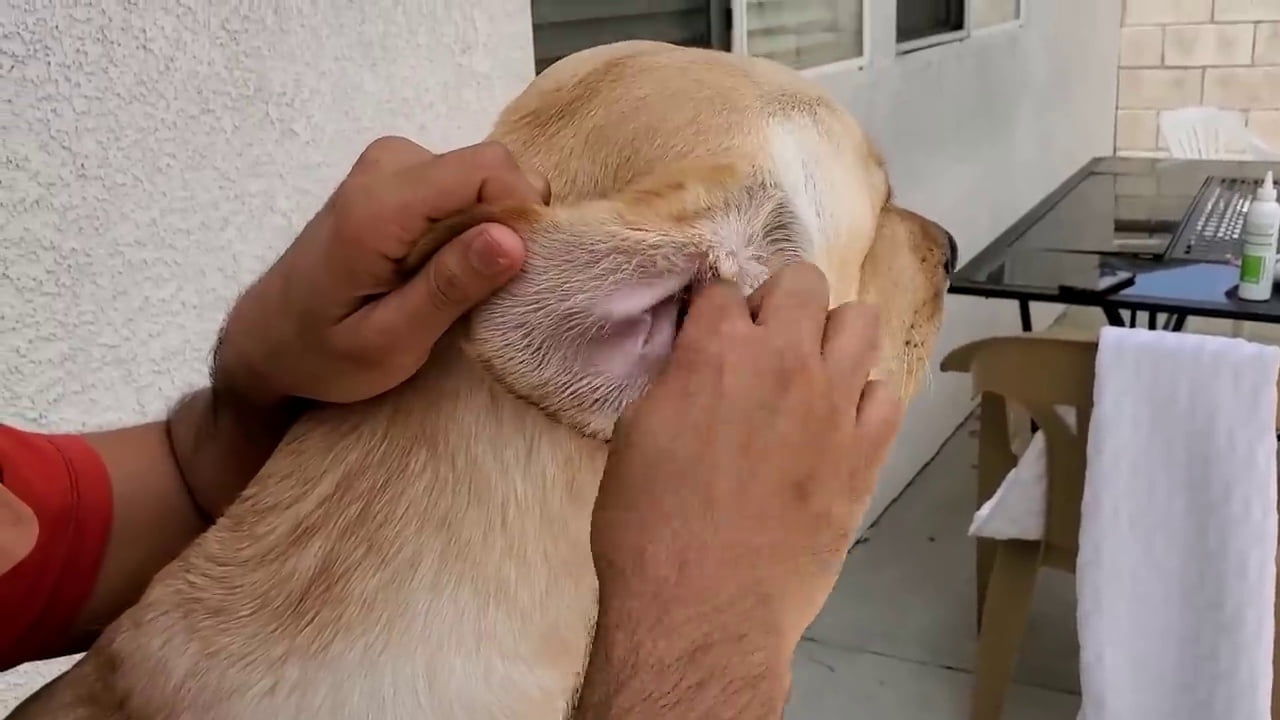Otitis externa, which occurs in the dog’s ears, is one of the diseases that plague many dogs. So this time, we will explain why dogs are prone to otitis externa. We will also explain the dog breeds and symptoms that are more likely to worsen, so please refer to them.
What is “otitis externa” in dogs?
Otitis externa in dogs refers to an ear disease in which inflammation occurs in the external auditory canal, that is, from the entrance of the ear canal to the eardrum.
In addition to the growth of fungi and bacteria called Malassezia, a type of mold, in the ear, allergic diseases such as atopic dermatitis can also be cited as one of the causes.
Diagnosis is often made at veterinary hospitals through otoscopic examination and microscopic examination of earwax.
Depending on the symptoms, X-rays, CT, or MRI may also be required.
Why dogs are prone to otitis externa
Otitis externa is a disease that can affect any dog. Knowing the shape and nature of your dog’s ears and the reasons why they are susceptible to this disease will lead to prevention and make early detection easier.
So this time, we will explain why dogs are prone to otitis externa. Please refer to it.
The shape of the ear that is prone to otitis externa
Because dog ears are L-shaped, they have poor ventilation compared to human ears.
Dog breeds with floppy ears, such as beagles, are especially susceptible to the growth of fungi that can cause otitis externa because their ear canals become blocked.
If your ear is healthy, earwax will be expelled naturally, but if your ear is in a healthy state, earwax can easily accumulate and cause ear infections.
You should also be careful with dog breeds that have a lot of ear hair, as they tend to block the ear canals.
Because I have allergies such as atopic dermatitis.
Dogs with allergies such as atopic dermatitis are more likely to develop otitis externa due to skin problems.
It is also said that dogs with an unstable skin condition called “seborrhea”, where the skin produces too much oil or is dry, are also susceptible to otitis externa.
Because it is easy to get injured
In some cases, dogs scratch their ears with their paws, which can lead to infection and otitis externa.
Dogs can get injured while playing or walking, so you must be careful on a daily basis.
Dog breeds that are prone to worsening otitis externa
At the beginning, we mentioned that dogs are susceptible to otitis externa, but here we will explain the breeds of dogs that are particularly prone to otitis externa.
Dog breeds with large floppy ears such as dachshunds and beagles, dog breeds with dense fur in the ears such as Shih Tzus and poodles, and large dogs with floppy ears and a lot of ear wax such as golden retrievers. , are said to be more prone to otitis externa.
In addition, dog breeds that are prone to allergic dermatitis, such as Shiba Inu and retrievers, brachycephalic breeds, such as pugs and bulldogs, and dog breeds with narrow ear canals, such as small dogs such as Papillons and Chihuahuas, are also susceptible to otitis externa, so be careful. is required.
Symptoms of otitis externa in dogs
When a dog develops otitis externa, symptoms include “itching in the ears,” “red swelling,” “smelling ears,” “increased earwax,” “yellow ear discharge,” and “sluggish response to sound.” will be visible.
If your dog scratches his ears, rubs his ears on the ground, or shakes his head more often, suspect ear infections.
It is okay to clean your dog’s ears once or twice a month.
Gently wipe the ears with a damp cotton ball. However, it is best to avoid using cotton swabs as they can push earwax deeper into the ear.
Also, your dog’s ears are delicate, so be as gentle as possible when cleaning them.
If your dog has otitis externa, treatments include ear cleaning, ear drops, medication, and injections. Since the disease is prone to recurrence, it is important to treat it properly.
summary
This time, we explained why dogs are prone to otitis externa and which dog breeds are more likely to get it worse.
As I wrote at the beginning, any dog is susceptible to this disease, so you need to be careful. Especially if your dog is a breed that is prone to deterioration, get in the habit of carefully checking for any abnormalities when cleaning.
If you notice any abnormalities in your dog’s ears, take it to a veterinarian.
First of all, you should check the condition of your dog’s ears so that you can notice any abnormalities as soon as possible.
